No big surprises expected in upcoming report
With more slaughter capacity coming online, look for higher hog prices and heavier slaughter weights this fall compared to last.
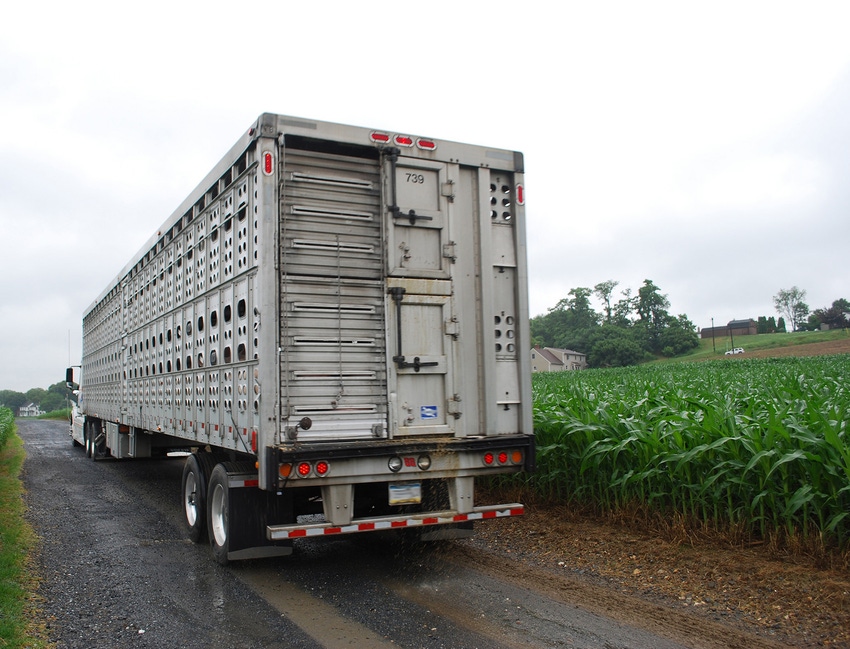
USDA will release the results of their June hog inventory survey on the afternoon of June 29. The trade predictions should come out next week. One question that is not asked in the trade survey is about revisions to past Hogs and Pigs reports. USDA bases revisions primarily on actual hog slaughter. It looks like slaughter of U.S. raised barrows and gilts during March-May was a bit lower than implied by the March inventory survey (up 4.88% versus up 5.26%). Therefore, don’t be surprised if USDA revises down the September-November 2016 pig crop and number of sows farrowed by an equally small margin.
The March report implied summer hog slaughter would be roughly 3.8% higher than last year.
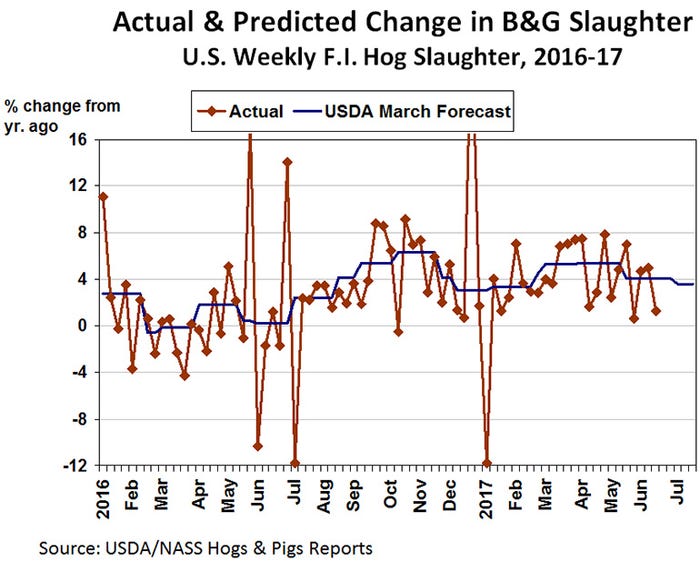
The day after the Hogs and Pigs report is released, USDA will release their June acreage estimates. How many acres of corn and soybeans farmers got planted this spring is obviously of great importance to pork producers.
There are lots of hogs out there. April-June will be the third consecutive quarter with record slaughter. The odds are good that hog slaughter during the next two quarters will also be record high. Record slaughter puts pressure on producer profits, but is good for packers.
According to USDA-Economic Research Service, the farm-to-wholesale price spread was 80.3 cents per retail pound in May. That was the highest ever for May and the fourth highest for any month. This is a major change. Over the last 10 years, May has had the lowest average farm-to-wholesale price spread of any month.
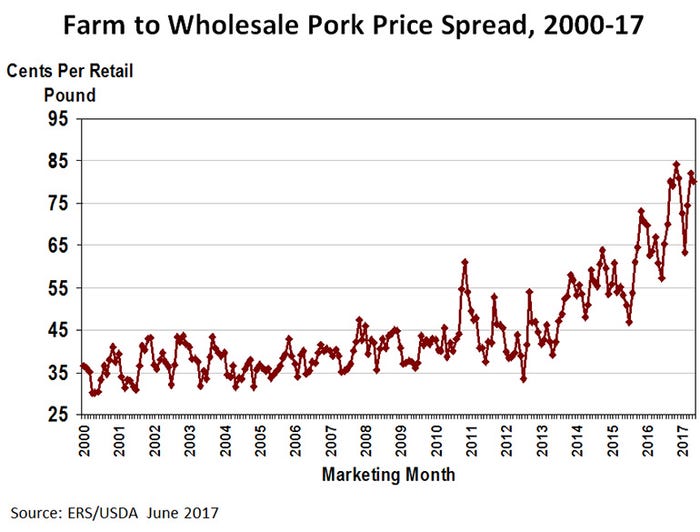
The farm-wholesale spread is one of the commonly used proxies for the profitability of hog packers. Typically, the wider the spread, the more profitable hog packers are. As the chart implies, hog packers have done well recently. That is why three big new hog slaughter plants are being built. Both the Seaboard-Triumph plant in Sioux City, Iowa, and the Clemens Foods plant in Coldwater, Mich., are expected to start operations in September. The Prestage Foods plant in Eagle Grove, Iowa, should open about a year and half later. This huge increase in slaughter capacity is likely to squeeze packer profits and bring the farm-wholesale price spread back down.
Retail pork prices tend to lag farm level hog prices by one or two months. Hog prices bottomed in November and retail pork bottomed in January. Hog prices peaked in February and retail pork prices peaked in March. Hog prices bottomed in April, and it looks likely retail pork bottomed in May. Hog prices appear likely to peak this month or next. Look for grocery store pork prices to peak in August or September.
Retail pork prices continue to be boosted by bacon. Bacon prices in grocery stores have averaged above $5 per pound for 48 of the last 49 months. Boneless pork chops and boneless ham have both been under $4 per pound for each of the last seven months. Pork chops used to sell at a consistent premium to ham. That has not been the case during the last four years.
The surge in bacon prices most likely reflects a steady increase in bacon demand as bacon has become popular as a condiment on other foods. It is not clear whether the decline in pork chop prices relative to ham prices reflect a change in consumer preferences or the impact of a big increase in the tonnage of hams being lost to the export market.
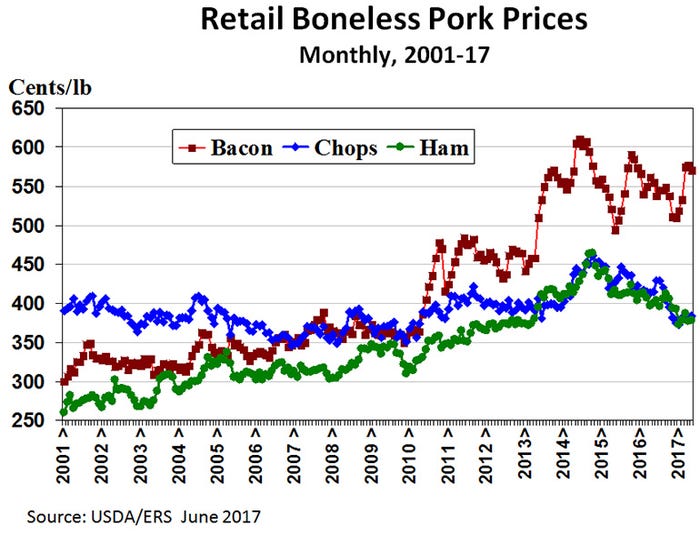
Slaughter weights have been below both the one and two year-ago levels for 14 of the 24 weeks thus far this year. Weights will move lower as summer weather heats up and then rebound when the weather cools this fall. Weights during the fourth quarter of 2016 were unusually low, likely because hog prices were exceptionally low. With more slaughter capacity coming online, look for higher hog prices and heavier slaughter weights this fall compared to last.
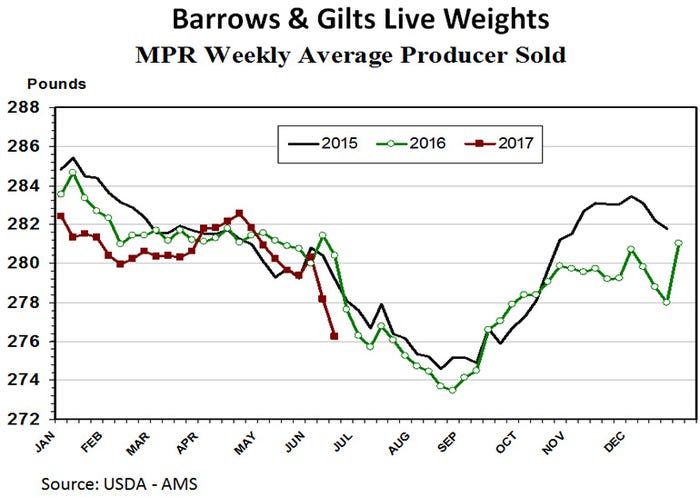
The Federal Reserve Bank increased the federal funds target interest rate by another quarter point last week. This was the third increase in the last seven months. This is not particularly good news if you have variable interest rate debt. Rates on many credit cards will automatically increase. The move indicates the FRB is confident the U.S. economy is getting stronger. As a general rule, the faster the economy grows, the stronger meat demand is.
About the Author(s)
You May Also Like





